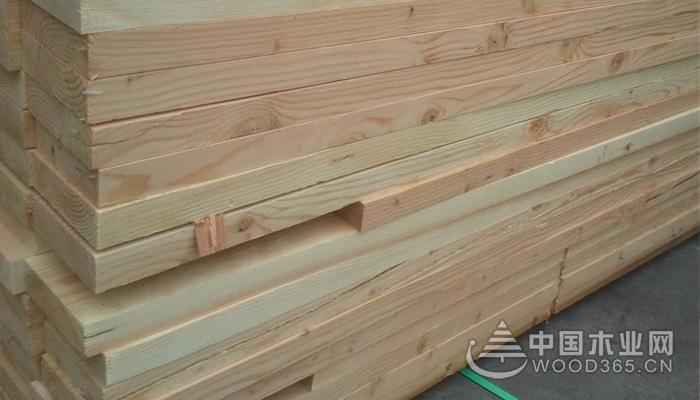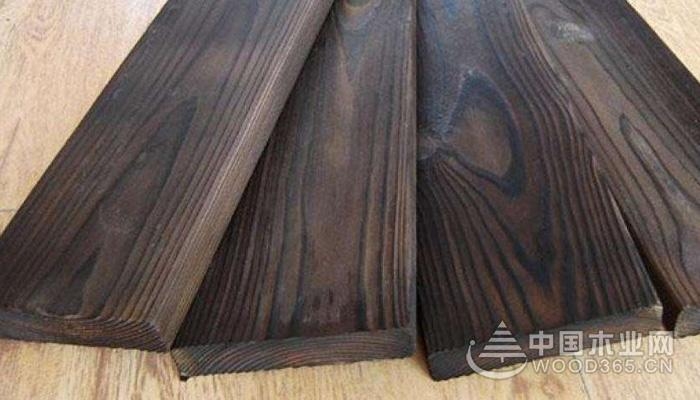Anti-corrosion wood is outdoor weather-resistant wood, carbonized wood sub-surface carbonized wood and deep carbonized wood. Many customers will confuse carbonized wood with anti-corrosion wood. Xiaobian tells everyone the difference with professional academic ideas.

The concept of anti-corrosion wood is introduced from Finland to the domestic market. Compared with the reinforced concrete structure in the domestic market, the use of wood structure in Europe and the United States is relatively high. The advantages of wood structure are energy saving and environmental protection, fast construction and long service life. The wood structure after the flame retardant treatment is superior to modern buildings in terms of fire prevention and earthquake resistance. So how do so many wooden buildings maintain their service life? The answer is anti-corrosion wood.
The principle of anti-corrosion wood: anti-corrosion of wood is the treatment of commercial wood, using chemical preservatives to convert wood fiber in wood into bacteria, termites and microbes that are inedible to prevent wood spoilage and insects such as termites. Corrosion of wood to achieve the purpose of extending the life of the wood. Nanqi uses odorless, colorless modern chemical anti-corrosion treatment technology to protect wood exposed to wind and rain, contact with the ground or used in high temperature areas, so that they can still be painted, dried and touched after treatment.
Douglas fir wood preservative wood is a preservative wood treated with chemicals. Carbonized wood can achieve the effect of anti-corrosion wood, but the processing technology of carbonized wood is different from anti-corrosion wood. Carbonized wood is divided into surface carbonized wood and deep carbonized wood, and only deep carbonized wood can be compared with wood preservative.

Douglas fir wood preservative treatment process
Vacuum high pressure impregnation
This process is a key step in the anti-corrosion treatment. Firstly, the physical process of preservatives into the interior of the wood is realized. At the same time, the chemical reaction process between the active ingredients of some preservatives and the starch, cellulose and sugar in the wood is completed, thereby destroying The living environment of wood decaying bacteria and insects effectively improves the outdoor wood preservative properties of wood.
High temperature qualitative
Continue to allow the preservative to penetrate into the interior of the preservative wood as evenly as possible at high temperatures, and continue to complete the chemical reaction between the active ingredients of the preservative and the starch, cellulose and sugar in the wood. Further destroy the living environment of bacteria and insects that cause wood decay.
Naturally dried
Natural air drying requires air drying in the actual use of wood. This process is to adapt to the changes in the structure of wood cells caused by environmental changes in outdoor open-air wooden floors and outdoor special anti-corrosion wood floors, so that it can be maximized in the process of gradual change. Fully fixed to avoid changes during use.
The charring process of Douglas fir carbonized wood can be divided into the following main steps:
- Step 1. Warming up, high temperature kiln drying
Heating with heating, the temperature of the kiln rises rapidly to 100 °C.
Then, when the temperature rises to 130 ° C and remains stable, the wood kiln begins to dry and the water content drops to almost zero.
-Step 2. Heat treatment
Once the kiln is dry, the temperature inside the kiln rises to between 185 °C and 215 °C. According to the final use of carbonized wood, this temperature will last for 2-3 hours.
-Step 3. Cooling and humidity adjustment
The final stage is to use a water spray system to cool down; when the temperature drops to 80-90 ° C, the humidification begins again, so that the wood moisture content reaches a usable level of 4-7%.
Injectable Dermal Fillers provide a minimally invasive approach to reducing facial lines and wrinkles and restore volume to the face. Due to their popularity and benefits, plastic surgeons are finding ways to maximize the benefits. A recent study suggests that dermal fillers provide varying degrees of lifting and volumizing effects for each patient.
Scans were taken of the cadavers after dermal fillers were injected and showed significant increases in local soft tissue volume in central areas of the face. By targeting these areas, the facial injections provided local lifting effects, however, the benefits were extremely localized with no accompanying regional effects. But, when dermal fillers were injected in lateral areas such as the temple, mid-face, and jawline, the fillers not only created localized lifting but also regional lifting in neighboring areas of the face.
With these findings, plastic surgeons are seeing the importance of combined injection techniques to provide larger benefits for their patients. For example, if a plastic surgeon added a deep filler injection and a temple injection, the technique provided an additional 17.5 percent increase in lifting the temple, plus a 100 percent increase in lifting the jawline.
Face Dermal Filler Injection,Hyaluronic Acid Fillers,Dermal Filler Injection,Fillers For Smile Lines
Rimless Industry Co.,Ltd. , https://www.rebornplla.com